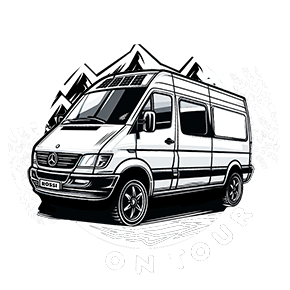OUR TRAVEL-PHOTOGRAPHY EQUIPMENT
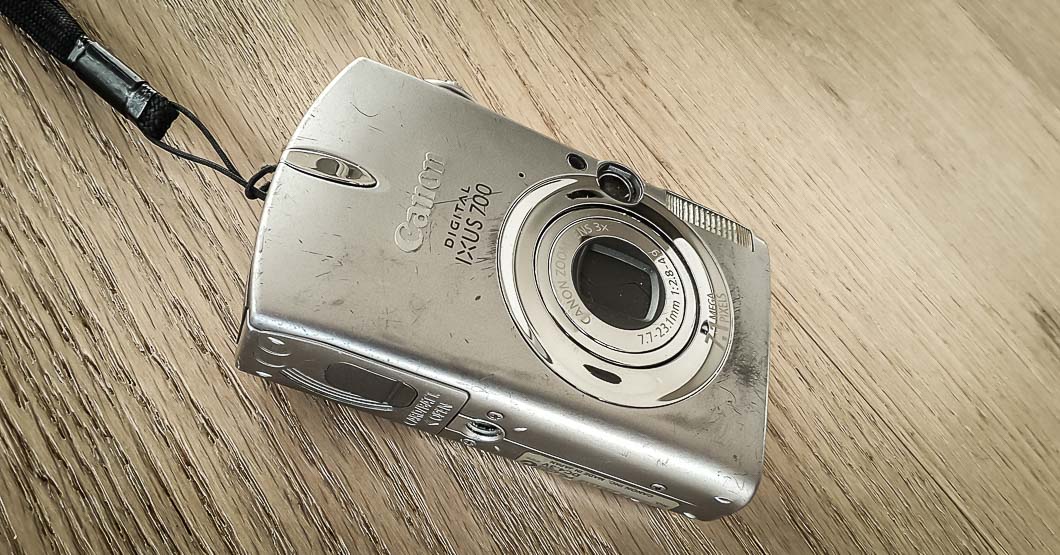
CANON IXUS 700 - Has been part of my photography equipment since 2004 - Saved My Life - And Is Still Alive
I'm photographing since 1989. When I started traveling in 2005, I only had a lil' Canon IXUS 700 and a Panasonic Videocamera with me. Even in this time, I've been able to shoot beautiful images with it. With the "Video-DSLR"-Boom, my demands increased and a few years later, I used Canon DSLR's for "the great cinematic look".
Before I planned our trip to the US, I waited yearningly for the upcoming Canon 7D. With the 7D, I needed a proper tripod, a good slider, a good photo-video head and lots other things. A LowePro photographic belt with dozens of lenses, filters, batteries and so on.
At this stage I didn't care about weight, but a few days later I wished I had 😀
Walking down the Bryce Canyon with a heavy and unhandy rig of 10-13 KG wasn't a fun at all... I got pain in my back, in my butt, my shoulders and I felt muscles, which I never imagined they would exist.
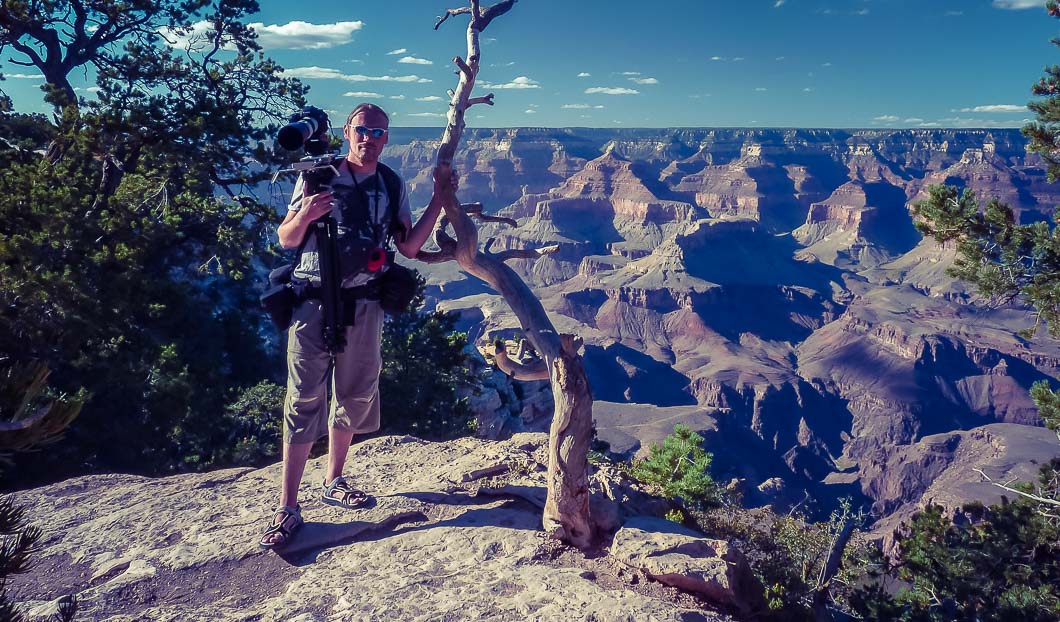
Me At The Grand Canyon, 2010 - At That Time My Photography Equipment Weighed Around 13 KG
After years and dozens of travelings, I learned a lot. And the most important part on that lesson has been: DO NOT listen to others!
I sold all my equipment for much less of what I paid for...I mean ->much TOO less and I thought about a new (weight)-plan. I just wasn't willing to carry a heavy tripod and a camera with me, which would be heavier than 3 or 4 KG, but I also wanted a fancy DSLR.
So this is, what I'm actually using and I'm super happy about all the stuff, as its overall weight is under 10 KG.
SONY Mirrorloess Fullframe Rig
After coming from Micro Four Thirds and APS-C, I finally switched to fullframe for my main camera.
They already became light enough for carrying even on long walks. They're not as lightweight as MFT, but much lighter than years ago.
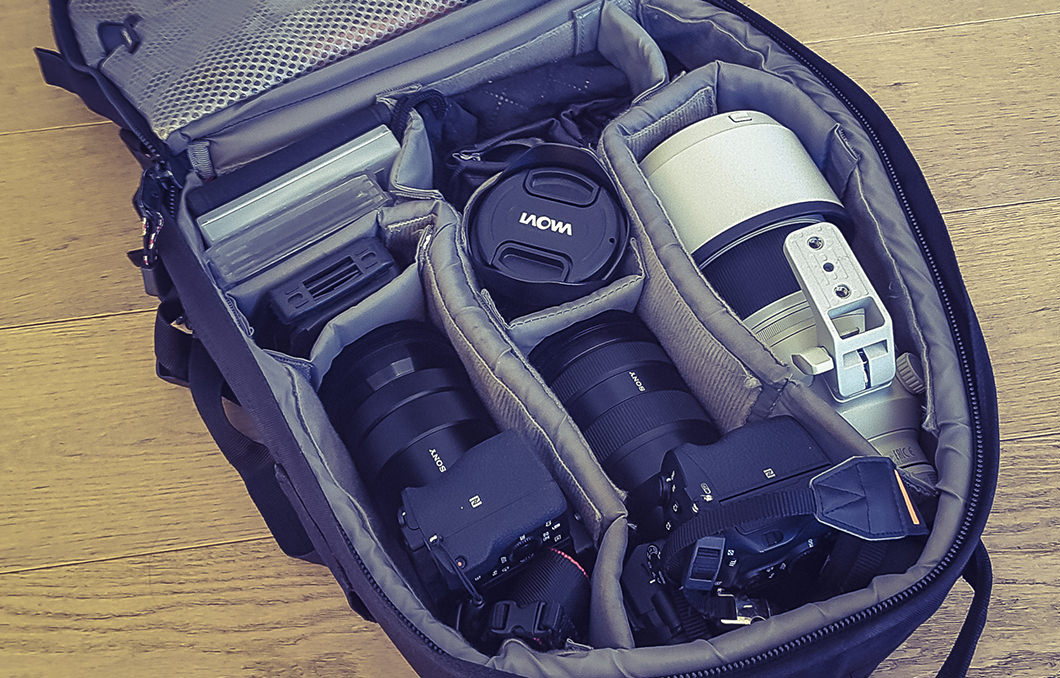
My Actual Complete Photography Equipment Weighs Under 10 KG (8.2 KG, To Be Precise)
But before I'm starting with showing off my fancy gear, I need to say, that you won't see any kind of advertising (links) here: This is, what I'm actually using and I'm doing it for a fu**in' good reason:
I'm absolutely convinced by all the stuff and about what I'm writing... so no paid bullshitting here 🙂
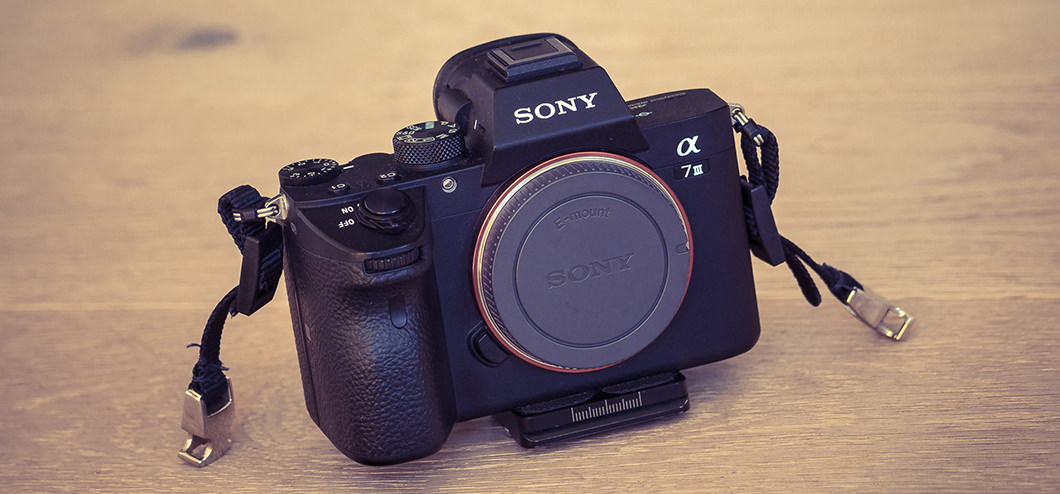
SONY A7III (ILCE-7M3), Mirrorless 24.2 MP Fullframe DSLR
SONY A7III (ILCE-7M3)
The Sony A7III is a mirrorless fullframe camera with 4K video-capabilites and comes up with a superb 24.2 MP quality. It's weight is about 650gr., not a real lightweight anymore, but still lighter than a Canon EOS 5D and even as a Panasonic GH5 mft-camera.
Its real advantages are the absolutely amazing low light capabilities (due to its huge sensor), as well as the 5-axis stabilizer, which - in most cases - makes a gimbal unnecessary. It has LOG and HLG output, comes with two SD card slots and tons of other professional features.
The 4K and FullHD video qualities are outstanding, the handling is really great and all the settings aren't a problem for a Pro (but maybe for a newbie, as it comes with hundreds of settings, which might bring you in trouble sometimes)
I mainly will use the A7III for photography, but also for video and time lapses.
I dare to say, that the A7III is (in 2018/19) one of the very best cameras you can get, not only for the money, but rather for its unbelievable functionality and quality.
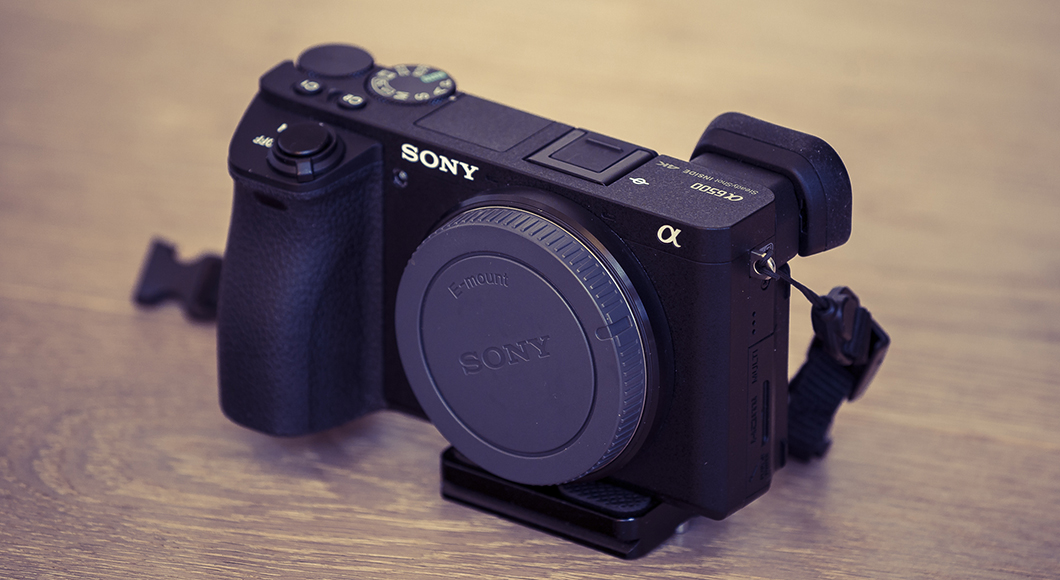
SONY A6500 - The Perfect Travelers Camera
SONY A6500 - Backup'N'B-Roll
I've learned from mistakes and one of them was, to do not have a second camera with me, while traveling.
In this case - and for B-Roll purposes - I've got the SONY A6500 (APS-C).
Also a 24 Megapixel-4K camera, but much lighter and smaller than the A7III.
Its quality is superb too and it comes with lots of professional settings, which makes this tiny 'lil camera become a great B-Roll cam. I like it better than my old Panasonic GX8, as it comes with slightly increased dynamic range, as well as with a better low light performance
All in all the perfect camera for the traveler who wants the best for her/his money.
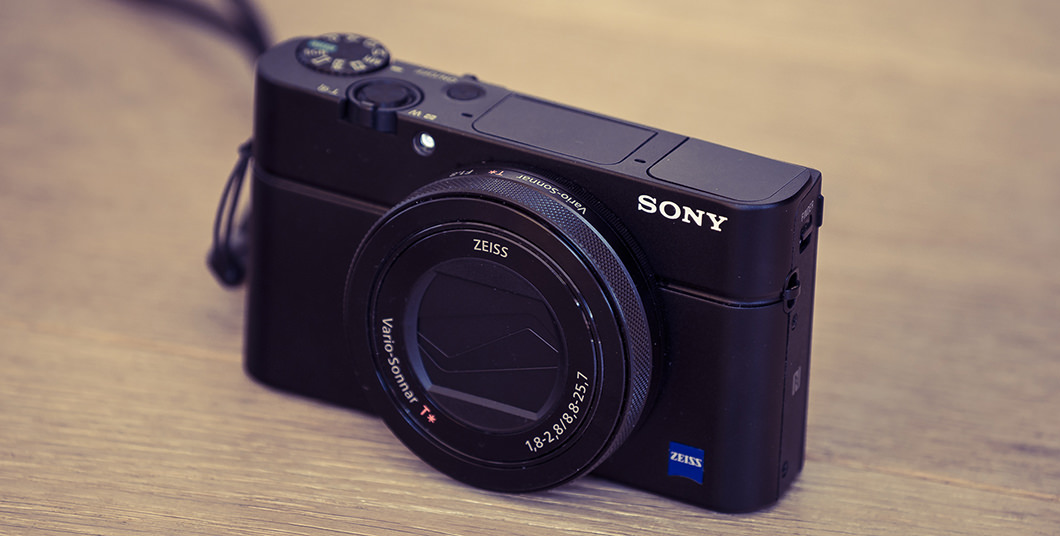
SONY RX100IV - The Perfect Camera For Long Hikes
When It Needs To Be Even Smaller - SONY RX100IV
Even the smallest and most lightweight camera can get heavy at a certain point, especially while hiking long and steep trails, which might take several hours or days.
For this case, the RX100IV is the very best choice. It weights just "nothing" and comes with dozens of Pro-features, shoots videos in 4K or with amazing 960 fps (super slowmo) and the most important is: the image quality is still - and since years - one of the best for such a tiny pocket-camera.
I even used it several times for concert-photography and WOW... absolutely astonishing.
There's not much to say about it: brilliant!
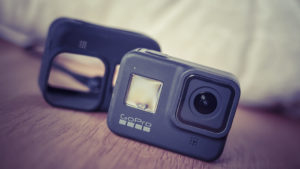
GoPro Hero 8 - Black Edition
goPro Hero 8 - 4K Actioncamera
For special purposes like diving, skydiving, bungee jumping or just for mounting it onto our vehicle, we're using this very tiny and exceptionell well built 4K actioncamera.
I never liked the GoPro cameras that much. Either they've got a horrible image quality or the images have been distorted, apart from the fact, that GoPro cameras are quite expensive.
But with the Hero 8, I switched my mind.
This camera is by far the very best action-camera, I ever held in my hands. The image quality is outstanding, no distortion, no grain and no compression artefacts anymore. The internal stabilizer (with its hypersmooth function) is just incredible. Images look like as shot with a DSLR, as well as videos, which look like shot with a gimbal. Just WOW.
And the one of the very best advantages are:
It shoots with 100 MBit/sec in HEVC/h.265
Without a housing it's already water resistant and an additional housing gives it a little bit more safety, as the lens is very fragile.
I've also got all the bits which are needed for several mountings
Lens Line-Up
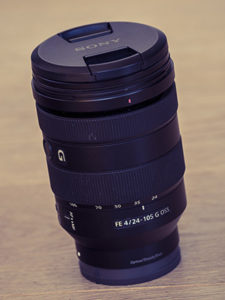 | The SONY FE 24-105mm is my all-day Run'n'Gun lens for the A7III. It's tack sharp from the beginning to the end and has a great focal range which is essential for traveling. With its 663gr. it's not super light-weight anymore, but this is due to the fullframe format. The big advantage is, that I do not need more than this lens for the most circumstances. |
 | The Sony SEL-P18105G is the APS-C pendant to the SONY FE 24-105mm. This lens is the main lens for the SONY A6500. It's small, super light and of a sturdy quality. Its image quality is comparable to the 24-105, even if it's not a fullframe lens. I was first thinking of just using the 24-105 on the A6500, but then the focal range would have been multiplied by 1.5 (coz of the crop factor) and would have made a focal range of about 27-157mm (which would haven been to close to my 24-105mm). At the end I can take a little bit wider photos with much less weight and much smaller size. |
 | For astrophotography I've got this one: The Venus Optics Laowa 15mm, f2 Zero D. As it is a super wideangle lens, "Zero-D" stands for "zero distortion". Very sturdy, very sharp, very expensive, but f2 gives me enough speed for taking some incredible night shots. Unfortunately this lens is only manual, won't save exif-data inside the photos and focussing is quite tricky. Overall it's a very good lens, with less softness, less chromatic abberation and still light enough to be carried around. |
"The Rocket Launcher"

SONY FE 100-400mm, F4.5-5.6 G Master
SONY FE 100-400mm, F4.5-5.6 G Master
It's heavy, it's sturdy, it's a G-Master.
The SEL100400 is a technical masterpiece in terms of build- and image-quality and is for the SONY range that, what L-lenses are for Canons.
With a maximum length of about 38,5 cm and a weight of about 1395 gr. it's not easy to carry, so I will mainly use it with a Monopod.
The speed isn't exceptional, but for my purposes of shooting wildlife while the day, it may do a proper job.
The GM closes the upper gap of my line-up, up tp 400mm on my A7III and even 560mm on my A6500.
The 100-400 supports Dual Image Stabilization and even at 400mm it's steady as hell. It's water resistant and weather sealed, looks "pro" and it's the first time for me, that I'll attach a camera to a lens, rather than vica versa 😀
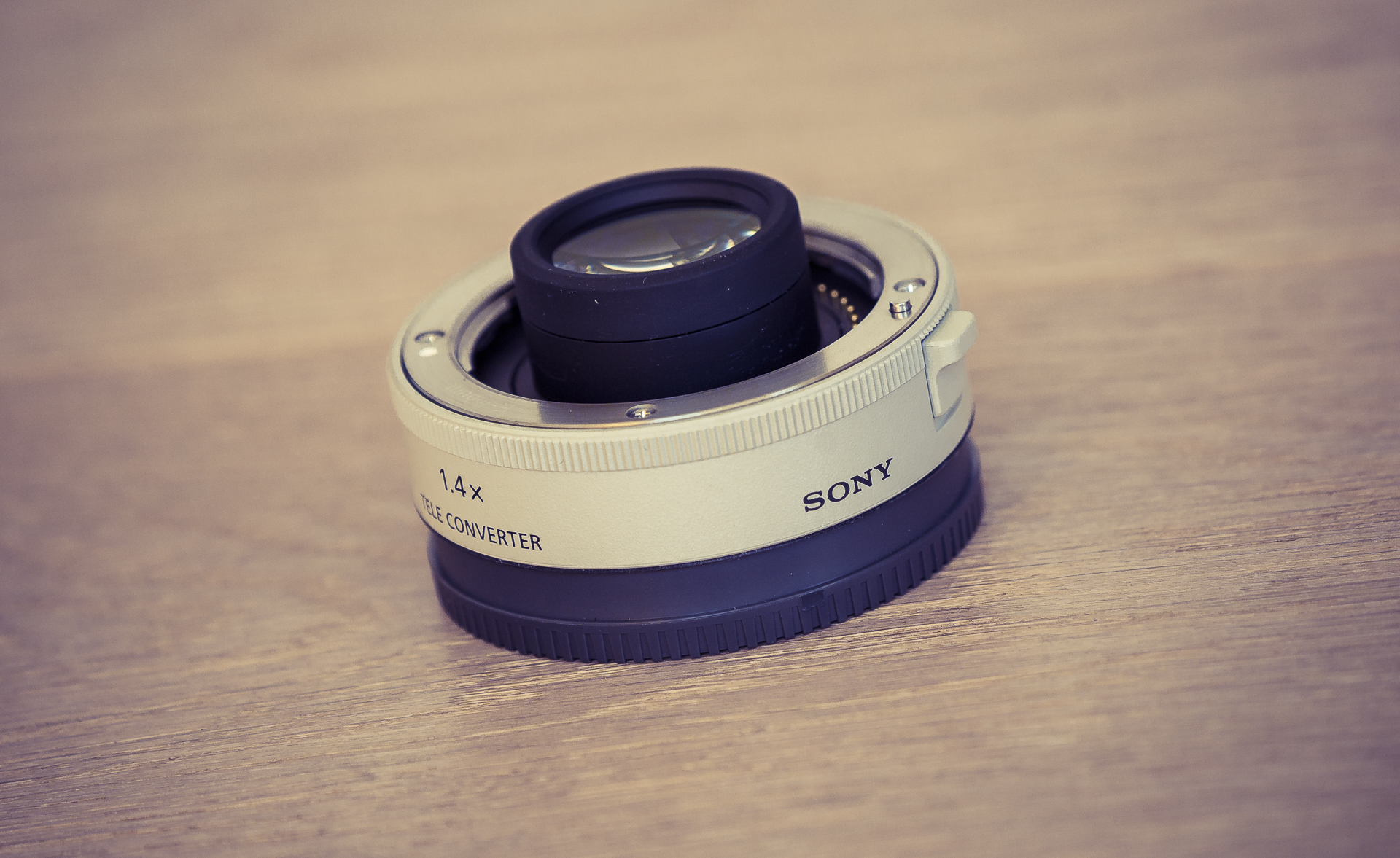
Sony SEL14TC - 1.4x Teleconverter
Sony SEL14TC - It's Magic!
The Sony SEL14TC does real magic to my 100-400mm lens as it increases its focal lenth up to 560mm on my A7III and even up to insane 840mm on my A6500.
OK, downside is, that the minimal f-stop is f8, but here comes the fullframe sensor in the game:
If it'll be to slow, I just need to increase the ISO to 2000 or even higher, for getting a proper shutter speed... so what? 🙂
The 1,4 TC only fits onto the 70-200GM and 100-400GM, that's the reason, why I sold the SONY 70-300, which is a really great lens, too.
All in all I now got a focal length from 15-840mm, which should work for the most purposes.
Lens-WHAT? Lens Heater?
Even I didn't know, that such gadgets exist, but once you shot a night time lapse and later on perceived a blurred image, caused by a bloomed lens due to dew, you know, what I'm talking about 🙂
Here comes the dew heater in the game.
It's a smal belt, which needs to be wrapped around the lens. Once plugged to an USB charger (NO laptop!), it heatens up and keeps the dew away from the lens.
Great stuff, which is a must have for all night sky photographers.

Dew Heater / Lens-Heater
Tripods, Heads, Taggers, Motion Time Lapse Device And Other Stuff
Speaking about TRAVEL photography and videography necessarily means, speaking also about the rest of all the minimum-lightweight-stuff, you'll need.
Therefore I use super lightweight tripods like the Sirui 1204X or Sirui ET 1204 travel tripods which are just 800gr. and made of carbon fibre, as well as a set of Cokin grey-filters, ND Filters and some nice videoheads, like the Manfrotto 701 HDV, the Gitzo G2180 and an external GPS Tracker.
The Sirui 1204 Carbon Fibre tripods are one of the best buys, I did so far. These tiny gagdets are incredibly light and very, very strong ( I mean, for 800 gr.?). I'm using them since 6 years now for 99% of all tasks.
A great videohead is the Manfrotto 701 HDV, which is barely light, super sturdy and its movement is mega smooth. I also own some other heads like the Gitzo G 2180 and some ball heads, but the 701 is top notch. A good compromise between weight and intended use.
The Syrp Genie Mini is a little device for motorized time lapses and/or video pans. It will be controlled by an app, which allows you to setup the speed, the rotation range as well as the shooting interval of your camera.

SIRUI T-1204X, Sirui ET 1204, Manfrotto MA 055 CXPRO3, Manfrotto 701 HDV, Gitzo Fluid G2180, Syrp Genie Mini
Columbus V990 Geotagger
EXIF data is essentiell for every photographer and for me as also a stockfootage photographer and videographer, proper GPS data is even more important.
Most of the higher end cameras don't come with a built-in GPS module, so you'll need another solution which makes it comfortable to tag your photos with location data.
Here comes the Columbus V990 Geotagger in the game.
This lil' toy captures your position every single second and writes the data into a CSV-file.
These CSV-files can be (converted into *.gpx) easily read by programms like Lightroom or Geosetter. With just a click you are able to locate, where a photo has been shot.
Furthermore it records a whole track and informs you about height, speed, acceleration and much more. This data can be easily viewed in Google Earth and even after years you can exactly say, how fast you've been on a specific day.
The battery lasts for r.a. 16 hours and every morning, I'm using a strap and wear it around my neck. One simple button-click and the journey can begin.
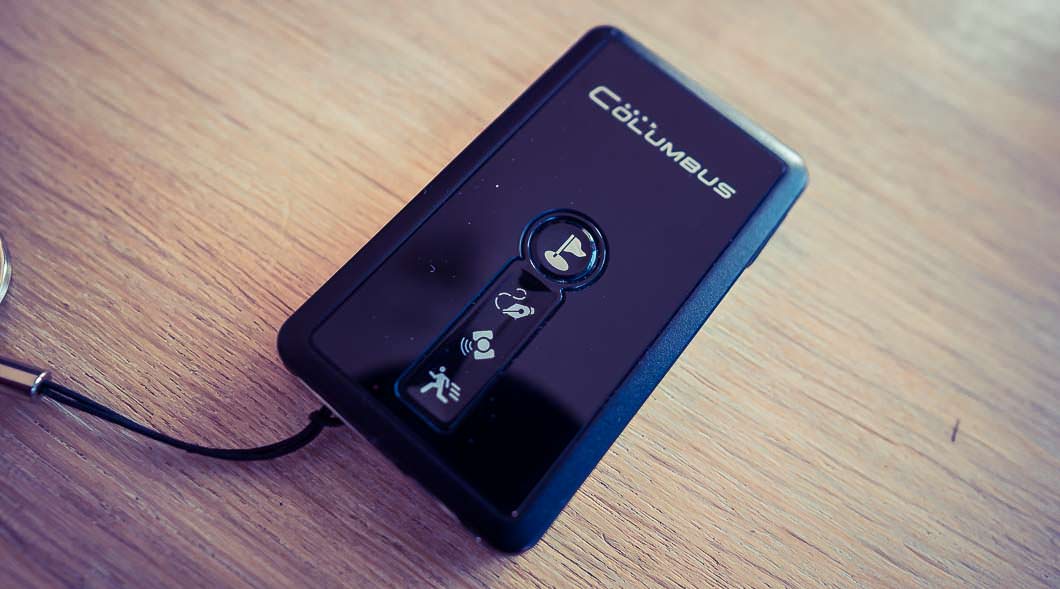
Columbus V990 Geotagger - Part Of My Actual Photography Equipment And A Must Have For GPS-Fans
ZOOM H2 & Samsung Galaxy S2 Tab
For audio recordings (foley stuff), I'm using a ZOOM H2 recorder.
It records in 4 channel 24 Bit and the recording quality is super cool...great for recording birds, blowing leaves, steps or other sounds like flowing water etc.
For remote shooting via WiFi, I'm using a Samsung Galaxy S2 Tab in 8 inch. This 8" Android tablet makes it easy to remote controll the camera inside the car, whereas the camera is mounted on the hood of the car. The tablet itself is very lightweight, pretty fast, super thin and very reliable. I have approx. 200 apps installed on it, so I'm furthermore using it for piloting my drone, for searching the Milky Way, calculating exposures or searching for campsites.
The Samsung Galaxy S2 Tab is in fact one of the most important parts in my equipment and highly recommended!
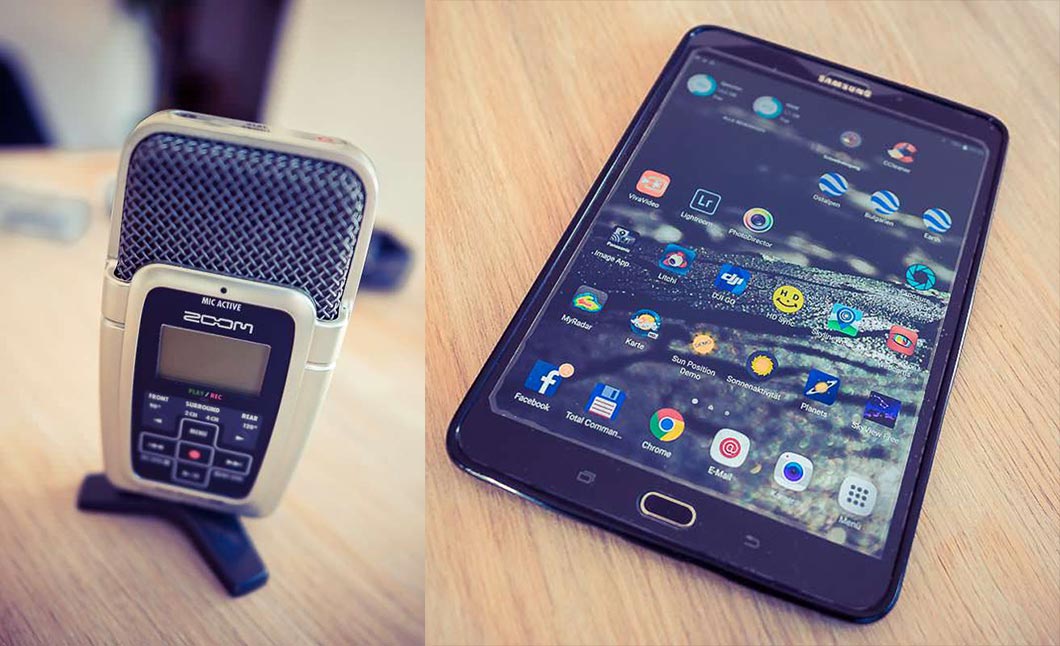
Zoom H2 Audiorecorder and Samsung Galaxy S2 Tab - Part Of My Actual Photography Equipment
Giottos Rocket Airblower, Cokin Filter Set & eneloop Batteries
Nothing is more annoying than dust on your cameras sensor. I'm not such a fan of wet cleaning, rather than using air pressure for getting rid of any sensor obstacles. The Rocket Airblower by Giotto is a must-have for this task. It's a bit too big, but does a perfect job.
When shooting on bad weather, a filter set can help you increasing the contrast or saturation, or lets you adjust your exposure better, by using a gradient filter.
For these tasks I like to use a Cokin Filter set with different filters.
The set is made of plastic and some say, that it decreases image quality.
Yes, that might be true, but because I already own pretty sharp lenses, I can easily ignore the fact.
For my headlights, a torch or my time lapse motor, I solely use eneloop rechargable batteries.
These batteries are highly reliable and the best on the market, as they hold their load for months with losing its charge. Not in any way comparable to standard rechargable batteries.

Giotto Rocket Airblower, Cokin Filter Set, eneloop Rechargable Batteries - Part Of My Actual Photography Equipment
POWERBANKS
Something of which you never can have enough, is power.
At the moment I need to charge round about 20 batteries from the heavy DJI batteries (which already suck 5Amps), over the batteries of my two cameras, as well as some for torch lights, lens heaters and the Astro mount. Last but not least our laptops, smartphones and tablets.
Beside my main battery, I'm using so called powerbanks.
They come in different sizes. The smaller ones for smartphones and tablets, bigger and stronger ones for laptops and other electrical devices.
I'm using a "Dino 18.200 mAH" powerbank which is mainly for starting the JEEP, (once its battery is empty), but for my photographic equipment, I took the "AOMASO 42.000 mAH" bank with 3 USB 3.0 Ports and one cigarette lighter plug.
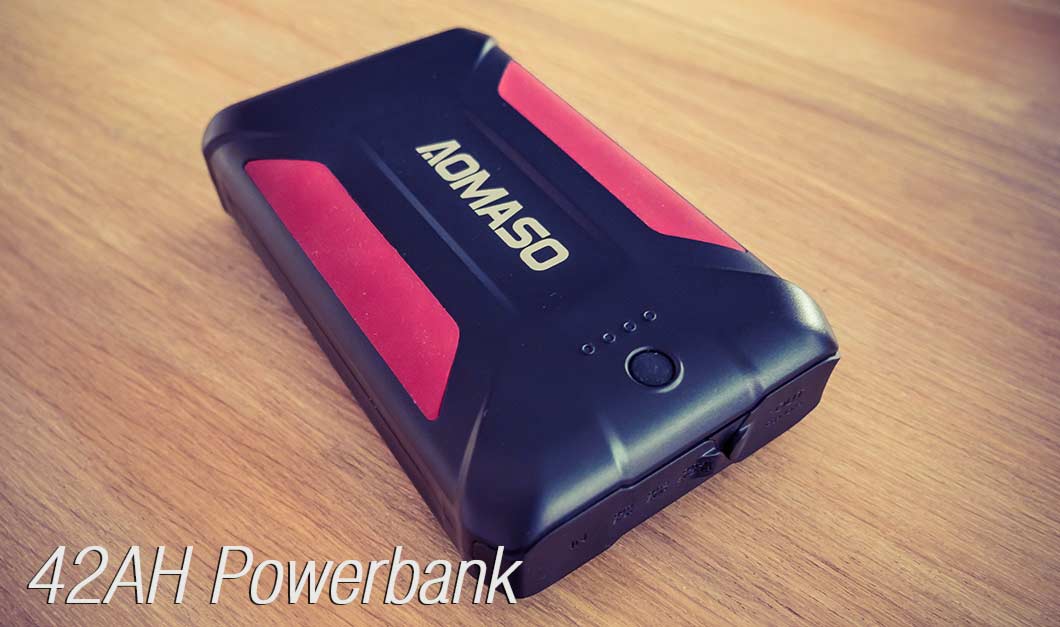
AOMASO 42.000 mAH - Powerbank
DJI MAVIC 2 Pro - 4K Quadcopter With Hasselblad Camera
Because the best always comes at the end, I'm introducing my "filming bird"...the DJI MAVIC 2 Pro Quadcopter.
Seeing the world from down below is an amazing experience for the most travelers... standing in front of the "Grand Canyon" or on the caldera of the "Piton De La Fournaise", the "Haleakala" or at the "Waimea Canyon" is so breathtaking, that it makes us feel as small as ants in this wonderful, big, big world.
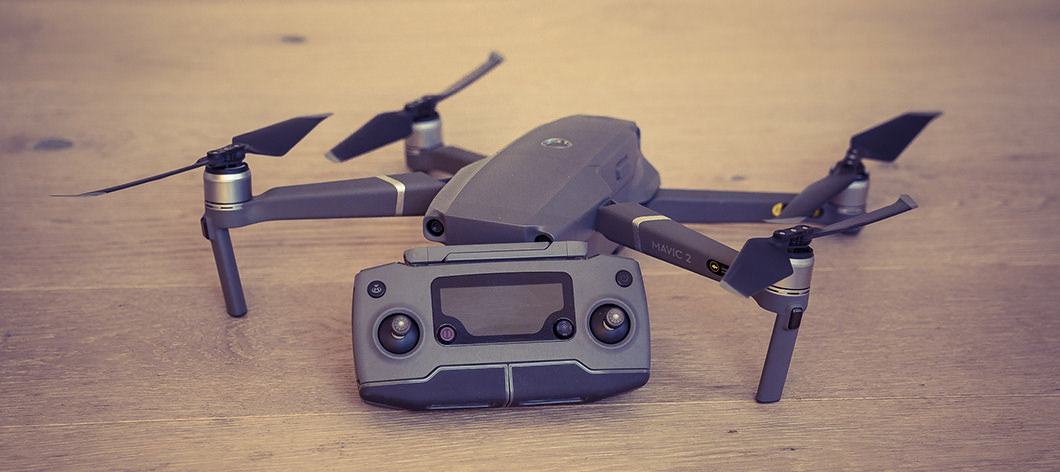
DJI MAVIC 2 Pro
Seeing the world from above makes us even smaller.
I'll never forget my very first flight and my worriedness about crashing a 1600€ copter, but when I saw on the tablet what was going on 100m above me, I got goosebumps all over.
In what beautiful world we are living... how big everything is and how much more beautiful from above.
That's the reason, why my copter is always on my side. It's the perfect enhancement for my wonderful hobby and I imploringly hope, that I still "will fly" until I die 🙂
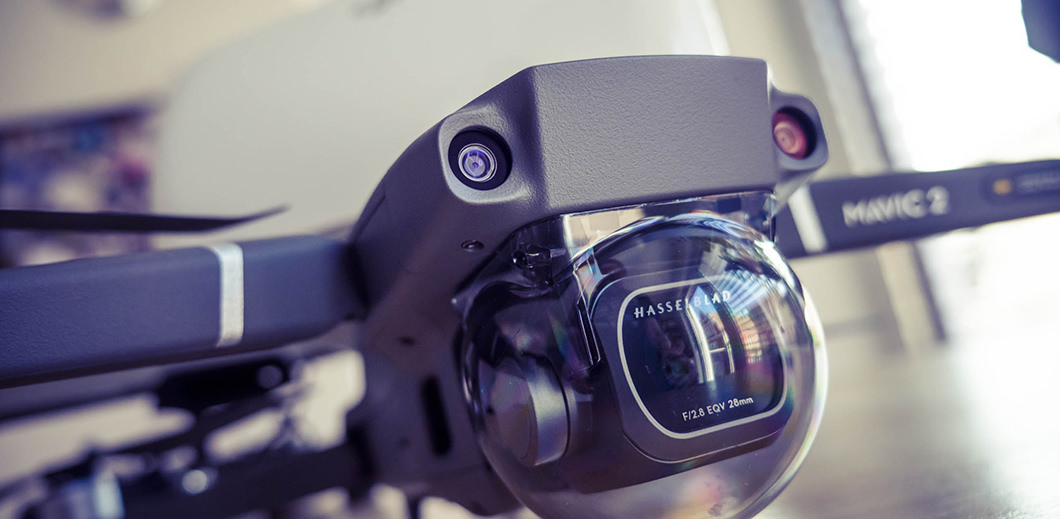
DJI MAVIC 2 Pro With HASSELBLAD 4K Camera - One Of The Finest Gadgets On The Market
Well... that's it for the time being with all the techie-nerd-gadget-stuff 🙂
Enjoy and ask me questions about what you still wanna know, or what is still unanswered.
In the end, here you see the very first movie, which I filmed with the drone.
PS: Watch the movie in 4K fullscreen... it's worth it 🙂
If you have any further questions about one of the products above, don't hesitate to ask.
